

At the most recent Chinaplas, I met Mr Kota Aoki, CEO of Nissei ASB, and we spoke about the production of stretch blow moulding machines in India. He invited me to Mumbai to see the production and assembly of Nissei ASB’s machinery range first hand. In early August, I met him and several of his colleagues for an in-depth tour of the factory and a fascinating round of discussions.
Nissei ASB, Mumbai, 2016
Mr Aoki was the first to ask a question: How long did it take to get from the hotel to ASB’s factory? A natural thing to ask, since the length of a journey is a preoccupying theme in Mumbai. As far as I could tell, the entire drive consisted of one long traffic jam. It took over two hours to get 35 km. During the monsoon period it takes a little longer than usual. There are just two seasons in India - either it’s the monsoon or it’s not raining. But whatever the season, distances in Mumbai are not measured in kilometres but in hours.
Mr Aoki also asked the second question: How did you overcome the culture shock? But I didn’t feel any culture shock. In fact, what had made the biggest impression on us up to that point was the friendliness, the trust even, of the Indian people, although we hadn’t met that many of them yet. The day before, our taxi driver had insisted that we pay him after our return journey. We were to call him when we wanted to go back to the hotel. So we phoned him and he picked us up and took us there.
Aoki: Yes, usually the Indian people respect foreigners; it doesn’t matter if they are Europeans, Asians or Americans.
On our trip north to the Nissei ASB factory, starting out from the airport in Mumbai, we were astonished by the many small, simple shops along the way (most were really just open kiosks directly on the soil, sometimes made of corrugated metal, covered with blue plastic tarpaulins). You could buy everything here: fridges, chairs, beds, tyres, iron parts... Of course we were shocked by the amount of rubbish. It was everywhere: in front of, next to and behind the shops - in fact it lined our entire route. We had likewise noticed lots of litter the day before in the city centre, particularly on its central beach.
Jagyasi: Sometimes discussions are going on to stop usage of PET and other plastics material. Now Government and many other bodies have taken many initiatives for bottle collection and recycling. This may take time, but I think in the next coming years, we will see big changes in this regard. This is the outcome of a new national study. The aim is to turn metropolises like Mumbai into “smart cities”.
Mr Aoki reiterated his point that foreign guests visiting Nissei ASB in India, particularly Europeans, always experience a culture shock at first. They see the traffic, the state of the roads, the slums, and they ask: how is it possible for you to be successful here? And Nissei ASB is enormously successful in India, with construction work on its third factory expansion now underway.
We certainly wanted to talk about the company’s current situation, but first we were curious to know what prompted Nissei ASB to move from Japan to India, and when the idea first emerged.
Aoki: It was in 1996. Let me say right away that there were no arguments in favour of India. An analysis of any company wishing to expand at the time would have been very clear: do not go to India. That applied to us, too. Despite this, in 1997 my father, the chairman of the company, decided to build a factory in Mumbai. He said to me: “Go to India – you have no choice”. And his instincts were right. Looking back, my personal situation was also an interesting one, since the move coincided with me joining the company. I had only been on the job for six months when my father sent me to Mumbai to build the factory. I was 24 years old and had no idea what to expect. But I was burning with curiosity and full of motivation. We quickly found the area where the factory stands today and were able to snap it up without any problems. The building work progressed rapidly as well. We are now actually expanding again, with a third construction phase adding 20,000 m2 currently ongoing. This will give us a total production area of 42,600 m2.
Keersmaekers: You can already tell from this story how much potential this market has. So much value is placed on education, and the ‘Indian dream’ really does exist. With good qualifications, you can become something, you can move abroad. Today, many Indians study in foreign countries. And we see that Indian businessmen are running more and more of our customers’ companies. Especially as Africa grows, we expect to see more and more Indian business people there. This is very typical for Africa, but also valid for many R&D departments of our global customers, where we see many Indians. In addition, the level of IT skills in India is even higher than in Japan.
Jagyasi: India has a population of some 1.25 billion, which is ten times as high as that of Japan. From a market perspective, India has huge growth potential, therefore, this is a very attractive place to invest and do business. The fact that so many people speak English is a big plus – and that our countrymen are very talented and motivated. In the future, when we will not only use this factory as a platform for production and assembly but also as a development centre, there will be new opportunities to increase ASB group performance further.
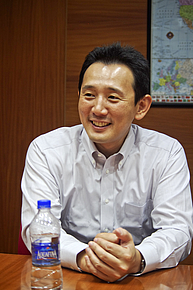
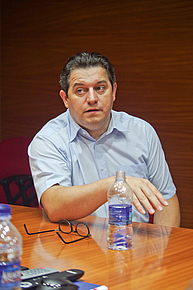
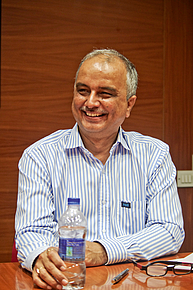
Kota Aoki, CEO Karel Keersmaekers, Managing Director R.B. Jagyasi, Managing Director Nissei ASB Nissei ASB Europe BV ASB International PVT. Ltd
Let’s go back to the beginning: Mr Aoki, what did you find when you arrived in India in 1997?
Aoki: At first I had a real culture shock when I came here from Japan. But then I quickly realised the potential: talented staff, engineers and designers, and they all spoke English. This was confirmed beyond doubt during the next four years that I spent here in Mumbai as Director. We also quickly realised that we would be able to train people up here who could then take on managerial roles at our factories in the US, China or Europe.
So is the situation different here than in Europe, where some firms are struggling to find talented new recruits for technical professions?
Aoki: Definitely, yes. We suffer from a shortage of skilled workers in Japan as well, but this is not the case in India. There is also something else that’s very important, namely staff training. And it is crucial to focus a lot of attention on retaining employees.
Keersmaekers: Yes, you can compare it to the Golden Sixties in Europe: people here strive to get a good education. Working for an international firm in particular gives them the chance to build a career. They find it easy to get other jobs, perhaps ones that are better paid. This isn’t such a problem where office staff are concerned, but training technicians takes a long time and is highly specialised. This is why we have to do our utmost to ensure these people stay with us.
Jagyasi: When we hire someone it takes two to three years to train them. We will know how an employee performs after training. By way of an example, we have 125 design engineers. Each one of them needs to understand the machines, the moulds, mould making and the blow moulding process before they are capable of constructing machines, moulds and bottles themselves (image ..). This takes time and commitment. If someone is good we would like to keep them for long period, but that can’t always be achieved. We start recruiting our staff early, for example by going into schools and colleges and presenting our company. We tend to hire trainees mainly from the local region, as Indians are very family-centric. Specialists also come from further afield, so we then help them with finding accommodation, schools etc. We have a attrition around 9%, while other industries in India have to cope with up to 15%. Wages at ASB India are above average, which also helps to retain staff. Equally, it is important to know that trade unions have a lot of power here in India. Although they’re not on our board, we enjoy good relations by taking care of all employees equally.
What is the key issue for your Indian business?
Aoki: Everything revolves around quality. This has been the case from the outset. At first, we only manufactured parts here, initially with wastage of 50%. It wasn’t easy to convince people that every tiny detail matters. When our Indian employees argued that small scratches weren’t a problem because they didn’t impair functionality, we had a hard task explaining to them that this was all important. That it was paramount for customers to receive perfect goods, goods entirely without scratches – regardless of how they functioned. There is a completely different way of thinking in India, totally unlike that in Japan or Europe. I have seen many companies that wanted to set up their business in India in the last 15 years, and I would guess that at least half of them failed. It is always, always about quality. And training, training, training. We are uncompromising, and that is why we are successful. We now manufacture the most difficult parts here, such as hot runners for our large machines.

„Customers want to monitor everything, upstream and downstream. Ultimately, we believe that digitisation will be capable of satisfying these client needs.“
How many employees did you start with and what is the situation today?
Aoki: To begin with, we had around 100 Indian employees and four or five managerial staff from Japan. Today we still have no more than six Japanese managers, though our workforce has grown to around 1300. Right from the beginning, we aimed to employ locals in management positions. Our Japanese colleagues are here to communicate with the headquarters, but the factory is largely run by Indians. The tax system, the unions – it is all very complicated in India, so we need specialists who understand the system. Trust and dependability are therefore paramount here, and they allow long-term collaborations to flourish. A wonderful example of this is our CEO, Mr Jagyasi, who has worked for us from the beginning. He was employed as a design engineer, then became a director and is now the CEO.
Nissei ASB is currently constructing its third production area. The future seems to be geared towards growth.
Aoki: Yes, we have invested a total of 20 million US dollars in the third building phase. The workforce is also set to increase by around 450 employees. Further strategic plans will take us to approximately 2000 staff members in future – which will be 85% of the entire ASB Group.
How has Nissei ASB changed in recent years?
Aoki: The number of employees we have in Japan is the same as it was 15 years ago: around 250. Increasingly, the focus there is on analysing markets and trends, on strategy. In future, we are planning to move our R&D, engineering and development activities to India as well. As an export-oriented company, we always need to know what is happening in the outside world. I’ll give you an example: 20 years ago, our turnover from selling machines in India was one million US dollars. Today we generate sales of between 35 and 40 million US dollars in this domestic market.
Let’s talk about markets and sales: what are the production figures in India and the sales figures for Nissei ASB?
Aoki: We have a total turnover of about 250 Mio US$. The largest percentage of sales on a country basis comes from USA with 16% of total sales, or 40 Mio US$. India is now positioned as the second largest group with 13-15%. Japan 10%, China 5%, while all Europe sums up to 18%. In India, we have a market share of 95% for the one-step process. This is based solely on the fact that we have a local presence here. based solely on the fact that we have a local presence here.
Keersmaekers: The PET market in India has grown by 12-15%. Here in Mumbai, we produce 50 machines and 135 moulds a month. The machines are assembled and tested here. We have sold 2500 of our smallest machines worldwide and 100 in India. Europe remains the strongest market for medium-sized machines, whilst the larger models are successful in the US. Getting back to India: The biggest market in India for PET bottles is liquor. And this is also interesting: 40% of the stretch blow moulding machines in the Indian market are one-step machines.
India is not Nissei ASB’s first foray abroad.
Aoki: That is correct. In 1998, we also started a factory in China, which we closed five years ago. The reason? That factory did not turn a profit.
What was the main difference between China and India?
Aoki: We started building our two-stage stretch blow moulding machine in China. But at that time so many local Chinese companies were developing their own machines. So the primary reason was: we couldn’t compete with the price. There wasn’t really a good fit in terms of the mentality either; the distinct cultures, a different attitude to work, even dissimilar creativity. Whilst we have employed local managers here in India for a long time now, we still hadn’t achieved this in China after ten years.
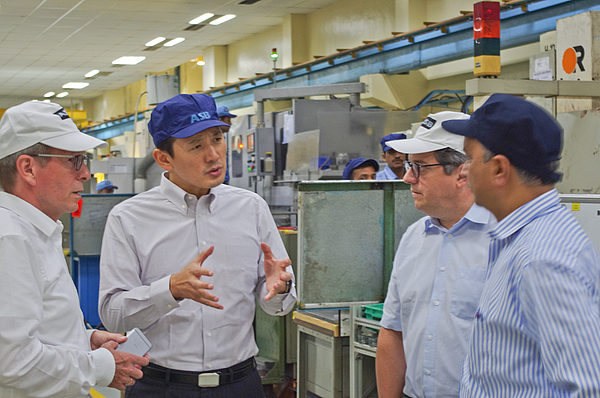
„Here in Mumbai, we produce
50 machines and 135 molds a month“
India is not Nissei ASB’s first foray abroad.
Aoki: That is correct. In 1998, we also started a factory in China, which we closed five years ago. The reason? That factory did not turn a profit.
What was the main difference between China and India?
Aoki: We started building our two-stage stretch blow moulding machine in China. But at that time so many local Chinese companies were developing their own machines. So the primary reason was: we couldn’t compete with the price. There wasn’t really a good fit in terms of the mentality either; the distinct cultures, a different attitude to work, even dissimilar creativity. Whilst we have employed local managers here in India for a long time now, we still hadn’t achieved this in China after ten years.
The management team here in Mumbai is Indian. How often do you personally travel here?
Aoki: I visit India four to five times a year and stay here for five to six days.
Does this factory run a three-shift operation?
Jagyasi: Production operates in three shifts, 24 hours a day, 365 days a year. Where else on earth is that possible?
Aoki: In the past our customers sometimes came to Japan for the final tests and today they come to Mumbai. When they visit for the first time, they are astonished by what we are able to do here. For example, we can modify a mould overnight with design and manufacturing taking place here on site. In Japan, we use subcontractors for the moulds. Here we have control of our own production. The factory is basically equipped with the same technology that is used in Japan. The 3- and 5-axis milling machines, the turning machines and the raw material for the manufacturing come mainly from outside of India. Manufacturing of parts or components in India is approx. 30% cheaper compared to Japan. This is a big economic advantage.
Keersmaekers: In India the convertor margin on PET is lower and the energy cost are higher in comparison to Europe. The demand for machines with lower energy consumption is much higher than in Europe, as energy costs 12 cents per kWh in India compared to 6-8 cent per kWh in Europe.
What is the technological focus of Nissei ASB?
Aoki: Our strength lies in filling machines for household products, cosmetics and chemicals – not drinks. We supply all major brands, including here in India. From our point of view, challenges in the single-stage process are identical to those in the two-stage process. The trend towards sustainability puts demands on us too, of course: In our markets, sustainability is driven by the end users. Weight reduction is being communicated as a sustainable approach. Big brands talk about sustainability in their mission statements: so we are committed to reducing weight.
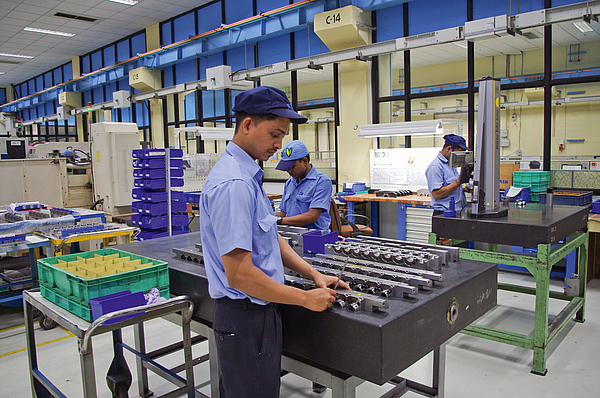
Aoki: „I am inspired by the thirst for
knowledge, the talent and the
fascination of people here.“
Along with sustainability, digitisation is a much-discussed topic in the industry at present. Is this an issue for Nissei ASB or for your customers?
Aoki: We have a total of around 250 accounts, or companies, that we supply. In addition to our smallest customers, who perhaps only run between two and five machines, we also have extremely large clients where 30 to 50 or even more of our machines are in operation. Big clients are increasingly asking for more systematic data logging capabilities with the aim of optimising production processes and making manufacturing more efficient. We think that as more consolidation takes place in our markets, the big companies will increasingly push digitalisation and this kind of technology in order to reap the benefits, today and especially in future.
Machinery suppliers repeatedly tell us that customer expectations continue to rise.
Aoki: That is absolutely true. Customers want to monitor everything, upstream and downstream. Ultimately, we believe that digitisation will be capable of satisfying these client needs. And we, too, will benefit in our production and assembly of machines, hot runners and blow moulds.
What are the key challenges in the next three to five years for the one-step process?
Keersmaekers: I can put it briefly: Higher efficiency, lower energy consumption. In terms of bottle quality: higher quality, closer tolerances, increased Cpk values. So, in general customer demands are getting tougher and tougher.
Aoki: In terms of markets, we want to expand into barrier technology. We are not interested in the drinks industry here either, as it is too cost-driven, but the cosmetics industry still uses a lot of glass packaging. That is our target market. This will entail increased focus on developments for thick wall containers with excellent bottle transparency. Some of these bottles also need to be suitable for hot filling. There is still a lot of potential for development here, as technology in the single-step process is still relatively new. In the past, the transparency of barrier bottles, for instance using nylon as the barrier material, was not sufficient for this market. We have since achieved significant improvements in this area. And there is also our innovation for K-Show 2016 in October, where we will showcase a double blow machine in a single-stage process for hot fill applications – a world first.
What is your key topic at Nissei ASB here in India, Mr. Aoki?
Aoki: You have seen that we have begun the third construction phase on our factory. I am inspired by the thirst for knowledge, the talent and the fascination of people here. We therefore not only want to benefit from cheap production and finishing in India, we also want to seize this enthusiasm and build a development centre. We have several new ideas and are also thinking about new business segments. Our production machines and cells here are extremely high-tech, and we could definitely envisage operating in the market as a supplier of complex components. Something completely new. The market for used machinery is also an interesting one, particularly in developing countries. In general, I believe that, particularly from here in India, we are extremely well placed to serve these markets. As I said, our current turnover is 250 million US dollars, and we want to achieve 400 million US dollars. This company, Nissei ASB, has that potential here in India.
Gentlemen, it has been wonderful talking to you. Many thanks for a very informative day at your factory here in India.
The comPETence center provides your organisation with a dynamic, cost effective way to promote your products and services.

magazine
Find our premium articles, interviews, reports and more
in 3 issues in 2025.





